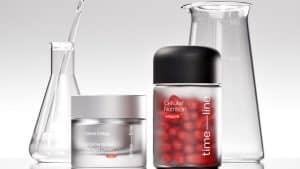The debate on the healthiness of organic food compared to its non-organic counterparts is an ongoing one, and it’s not likely to be resolved soon. The research is still ongoing, and when so many things can impact how crops grow, it’s a complicated area to identify specific data.
What we can do is try to look at individual nutrients and how their relative levels compare between the organic and the non-organic. For example, there are studies that suggest organic is good for your levels of vitamin C. Conversely, we may also want to consider whether organic food has less dangerous chemicals in it. Cadmium is a good example.
One of the reasons people choose organic food is that it isn’t treated with potentially toxic pesticides or other chemicals. The hope is that it reduces consumption of the things we shouldn’t be eating in the first place. Cadmium, a heavy metal, has no biological benefit to humans and in some situations can be considered harmful (https://wwwn.cdc.gov/TSP/PHS/PHS.aspx?phsid=46&toxid=15).
That doesn’t mean cadmium is worthless to humans. It has industrial uses in batteries, plating, pigments and the stabilization of plastics, to name just a few purposes. Some people working around cadmium may be at higher risk of exposure, particularly through inhalation or accidental ingestion, but the main problem is when it escapes and contaminates the soil.
Now you see where organic may be relevant. Soil health is a key aspect of organic farming, including trying to prevent contamination and pollution. Leafy green vegetables (like spinach), peanuts, potatoes, soybeans and sunflower seeds often have high levels of cadmium. Tobacco leaves also accumulate a lot of cadmium, although you’re unlikely to be eating them. It’s just another one of the risks of smoking.
Eating too much cadmium can cause stomach problems. Small amounts may not cause immediate problems but can build up in your liver and kidneys. It may stay there for years. The liver and kidneys are responsible for converting cadmium into less harmful forms, but too much can overload them so this process does not take place. Extended exposure to cadmium can damage your bones.
Most people aren’t going to be exposed to seriously dangerous levels of cadmium, but it may be reassuring to know that organic food (cereals, in particular, moreso than fruits and vegetables) does appear to have lower cadmium levels (https://www.cambridge.org/core/journals/british-journal-of-nutrition/article/higher-antioxidant-and-lower-cadmium-concentrations-and-lower-incidence-of-pesticide-residues-in-organically-grown-crops-a-systematic-literature-review-and-metaanalyses/33F09637EAE6C4ED119E0C4BFFE2D5B1). It’s just one potential documented advantage.




